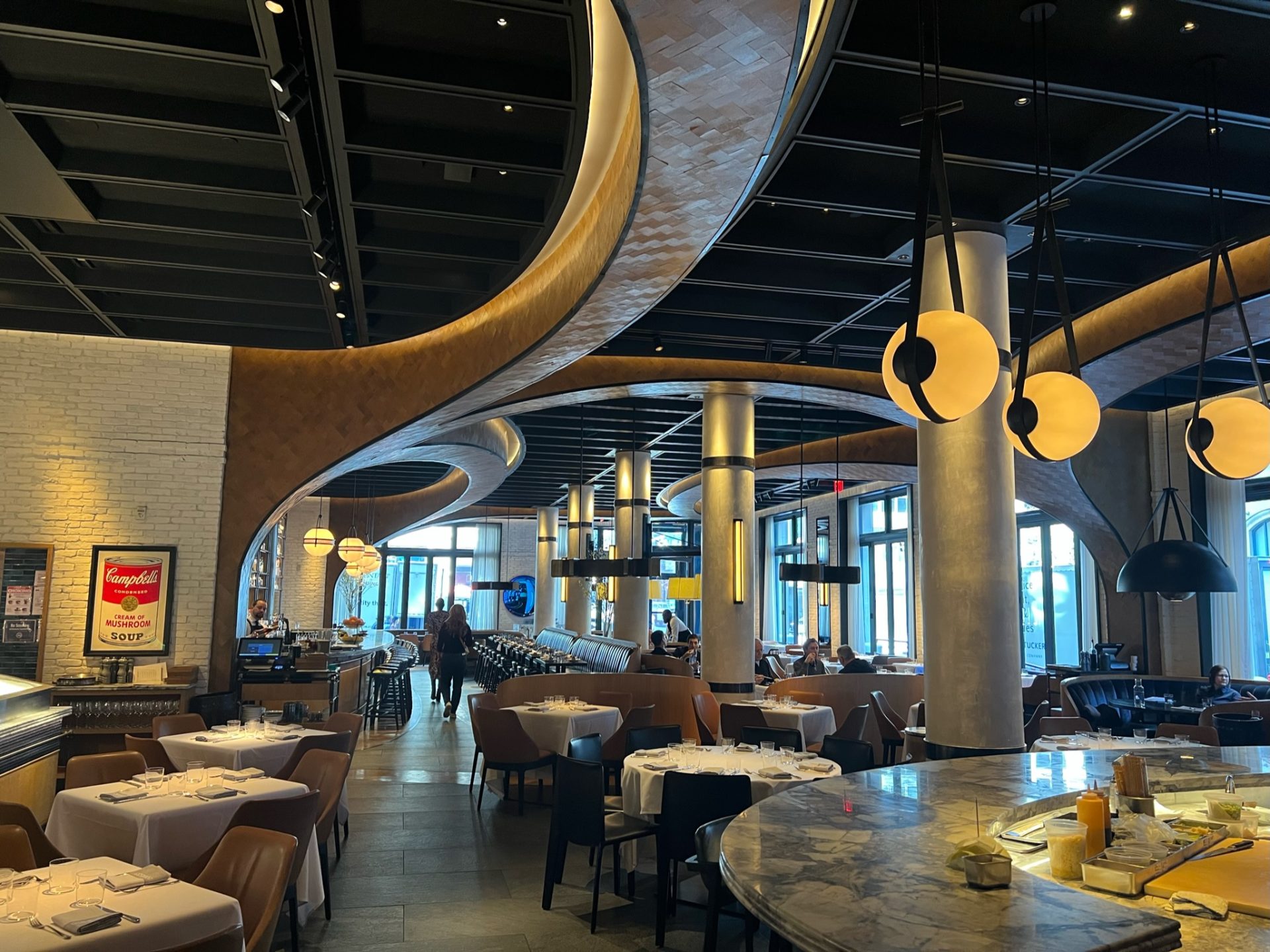Asian Fusion Restaurant: An One-of-a-kind Dining Experience in the Heart of Islamabad
Asian Fusion Restaurant: An One-of-a-kind Dining Experience in the Heart of Islamabad
Blog Article
Savor Authentic Eastern Cuisine With a Pan-Asian Twist for a Cooking Adventure
Embarking on a cooking journey through genuine Asian cuisine, improved with a Pan-Asian twist, offers a special opportunity to discover the rich tapestry of flavors that define the region's diverse cooking traditions. As you consider these tempting meals, think about the cultural narratives and historical impacts that shape them, each bite offering a story waiting to be discovered. asian restaurant isb.

Checking Out Pan-Asian Flavors
In the world of international gastronomy, Pan-Asian food stands apart for its remarkable variety and the harmonious interaction of flavors from various Asian cultures. This cooking method commemorates the rich traditions and one-of-a-kind components located across the continent, developing a tapestry of preferences that is both appealing and satisfying. Trick to Pan-Asian food is its capacity to balance contrasting tastes-- sweet, salty, spicy, and sour-- while highlighting the quality and high quality of each component.
From the umami-rich soy sauce of Japan to the intense chili peppers of Thailand, Pan-Asian food offers an extensive combination of flavors. These elements are usually combined in inventive means, enhancing dishes with layers of complexity. As an example, using great smelling herbs such as lemongrass and cilantro, common in Vietnamese and Thai food, adds a rejuvenating illumination to meals, while the unification of coconut milk delivers a velvety, abundant structure.
The emphasis on fresh fruit and vegetables and fragrant flavors makes certain that each meal is not only a banquet for the taste but also for the senses. Pan-Asian cuisine invites diners to begin on a culinary journey, checking out the huge and differed landscapes of Oriental gastronomy with every bite.
Blend Recipes to Attempt
While Pan-Asian food is commemorated for its typical flavors, the modern-day cooking landscape is increasingly embracing combination dishes that mix these classic components with influences from other areas. This innovative approach not just honors the rich heritage of Asian cookeries but additionally introduces novel preference experiences that interest contemporary tastes.
A prime example of such a blend dish is the Korean-Mexican taco, where marinaded bulgogi beef is covered in a cozy tortilla, covered with kimchi and a zesty gochujang-infused salsa. This combination weds the strong, full-flavored flavors of Korea with the lively, fresh components of Mexican food. In a similar way, sushi burritos have acquired appeal, integrating the delicate creativity of Japanese sushi with the hearty, hand-held ease of a burrito, commonly featuring fusion components like tempura shrimp and avocado with a drizzle of wasabi mayo.
An additional significant meal is Thai curry ramen, which infuses the creamy, fragrant seasonings of Thai curry into the comforting broth of standard Japanese ramen, producing a harmonious mix that entices the senses. These combination dishes expand past plain uniqueness; they represent a culinary dialogue in between societies, encouraging expedition and innovation worldwide of Pan-Asian food.
Important Active Ingredients and Spices
To truly appreciate Pan-Asian food, one have to recognize the essential components and flavors that form its structure. This diverse cooking style attracts from an abundant tapestry of Eastern practices, utilizing an unified blend of tastes and structures.
Fragrant elements are crucial, with ginger, garlic, and lemongrass being ubiquitous across various Pan-Asian dishes. These components offer a great smelling base that boosts the intricacy of flavors. Seasonings such as star anise, cardamom, and cinnamon present heat and character, resembling impacts from areas like China and India.

Food Preparation Methods and Tips
Understanding the art of Pan-Asian food requires familiarity with its distinct cooking methods, each adding to the vivid tapestry of flavors this cooking custom is commemorated for. Central to these approaches is the stir-fry, a quick cooking method that protects the dietary honesty and dazzling colors of active ingredients. Making use of a frying pan, the stir-fry approach enables also warmth circulation, essential for achieving the particular structure and flavor balance of Pan-Asian dishes.
An additional fundamental technique is steaming, particularly prevalent in Chinese food. This gentle approach preserves the all-natural tastes and nutrients of components, making it ideal for seafood and vegetables. Dumplings, a precious staple, usually gain from steaming, causing soft, succulent textures.
Barbecuing, likewise integral, gives smoky depths to recipes such as Korean bulgogi or Japanese yakitori (Best ambiance restaurants Islamabad). This technique frequently includes seasoning ingredients, enabling tastes to permeate deeply before cooking over an open flame or warmer
Finally, understanding the art of stabilizing flavors-- sweet, sour, salted, bitter, and umami-- is vital. Correctly layering these elements can boost a recipe from ordinary to remarkable, providing a complex and pleasing cooking experience that personifies the significance of Pan-Asian food.
Dining Experiences Worldwide
Across the globe, Pan-Asian cuisine provides an unmatched dining experience, celebrated for its rich tapestry of flavors and vibrant discussions. This culinary phenomenon has gone beyond cultural limits, recording the hearts and tastes of food lovers worldwide. In worldwide cities fresh York, London, and Sydney, Pan-Asian dining establishments offer as melting pots where cooking practices from Thailand, Japan, China, and beyond merge, giving restaurants with a diverse mix of dishes that highlight the region's variety.
The international try this site charm of Pan-Asian food exists in its capacity to offer both credibility and innovation. Cooks masterfully wed conventional active ingredients such as lemongrass, soy sauce, and miso with modern methods, resulting in recipes that are both acquainted and refreshingly brand-new. This blend allows restaurants to get started on a culinary journey that values heritage while accepting modernity.
Additionally, eating experiences are raised through attentively created settings that show the ethos of Pan-Asian appearances. From minimalist Japanese-inspired insides to lively Thai-themed rooms, each dining establishment supplies an unique setting that complements the culinary offerings. Because of this, customers are not merely consuming a dish yet partaking in a social experience, making Pan-Asian eating a truly international sensation.
Verdict
The expedition of Pan-Asian food provides a profound understanding of the detailed interaction of flavors and cooking customs across Asia. By welcoming blend dishes such as Thai curry ramen and sushi burritos, the cooking journey not only highlights the flexibility of traditional components but additionally showcases ingenious modern techniques. This gastronomic adventure, improved by cooking methods and necessary flavors, provides a distinct chance to value the multiculturalism and culinary artistry that define Pan-Asian food on a global range.
Beginning on a culinary trip through authentic Eastern cuisine, improved with a Pan-Asian spin, uses a distinct possibility to explore the rich tapestry of flavors that specify the area's diverse cooking practices.In the realm of worldwide gastronomy, Pan-Asian food stands out for its amazing diversity and the unified interplay of flavors from different Asian societies. Key to Pan-Asian food is its capacity to balance different flavors-- pleasant, salted, spicy, and sour-- while highlighting the freshness and high quality of each ingredient.

Report this page